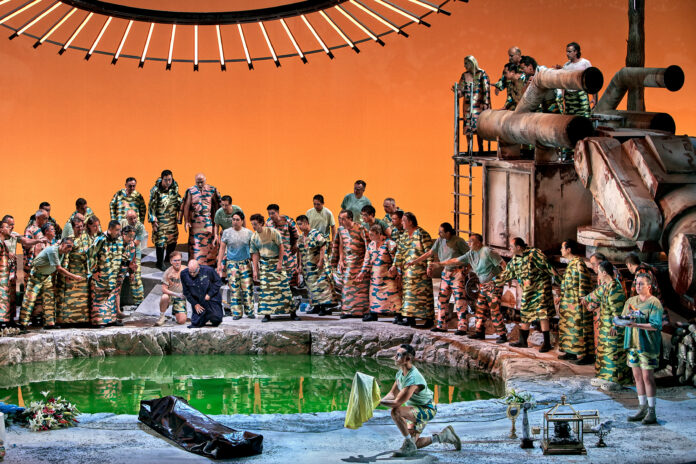Introduction to a Futuristic Opera
The world-famous Bayreuth Festival in Germany has premiered a groundbreaking production of Richard Wagner’s celebrated opera "Parsifal". This innovative version, directed by MIT faculty member Jay Scheib, is set in a post-apocalyptic future and incorporates augmented reality (AR) technology. The production has been making headlines and generating extensive media attention and discussion among opera enthusiasts and the general public.
A New Interpretation of "Parsifal"
The new "Parsifal" offers a fresh interpretation of the classic opera, with a setting that reflects the challenges of the modern world. Director Jay Scheib explains that the production was inspired by the themes of wounds that do not heal, both physical and environmental. The story is set in a world where the pursuit of resources, such as cobalt and lithium, has led to the collapse of society. The holy grail, a central element of the original opera, is reimagined as a lithium-ion pool that both energizes and poisons.
The Role of Augmented Reality
The AR technology used in the production allows a portion of the audience to experience the opera in a completely new way. With the help of headsets, viewers can see hundreds of additional visuals, from fast-moving clouds to arrows being shot at them. The AR portion of the production was developed by a team led by designer and MIT Technical Instructor Joshua Higgason. The team worked tirelessly to make the technology work seamlessly in a large environment, with 2,000 headsets responding simultaneously.
Overcoming Technical Challenges
The integration of AR technology into the opera was a significant challenge. Scheib and his team had to research and develop new solutions, as no one had attempted such a project before. They made multiple trips to Bayreuth, created detailed models, and built a team of animators, developers, and designers from around the world. The result is a truly immersive experience that complements the music and scenic design.
Balancing Tradition and Innovation
The Bayreuth Festival is known for its tradition of innovation, and Scheib’s production is no exception. The director believes that the key to success lies in finding a balance between tradition and innovation, and in creating a unified experience that combines scenic design, AR, lighting, and costume design. The production features a talented cast of performers, and the music remains at the forefront.
The Bayreuth Experience
Working at the Bayreuth Festival has been an incredible experience for Scheib, who praises the intellectual integrity and expertise of the technicians and artists involved. The conductor, Pablo Heras-Casado, and Scheib have been working on the production for several years, and the music remains the primary focus. The support of Katharina Wagner, the festival’s general manager and Richard Wagner’s great-granddaughter, has been instrumental in bringing the project to life.
Conclusion
The new production of "Parsifal" at the Bayreuth Festival is a groundbreaking achievement that pushes the boundaries of opera and technology. With its innovative setting, AR technology, and talented cast, it offers a unique and immersive experience for audiences. The production is a testament to the power of collaboration and the importance of balancing tradition and innovation in the arts. The project was supported by an MIT.nano Immersion Lab Gaming Program seed grant and developed using capabilities in the Immersion Lab, with additional funding from the MIT Center for Art, Science, and Technology.

